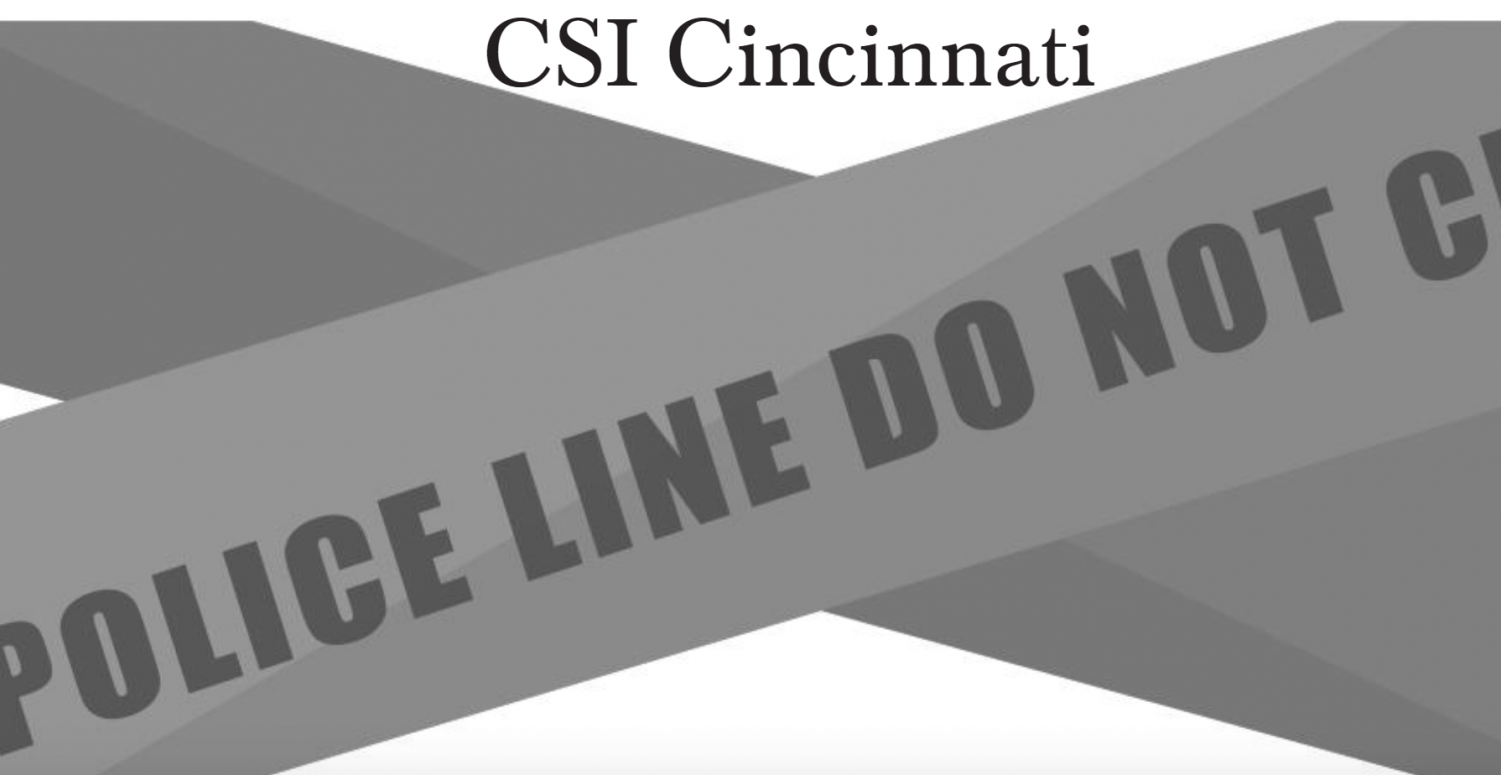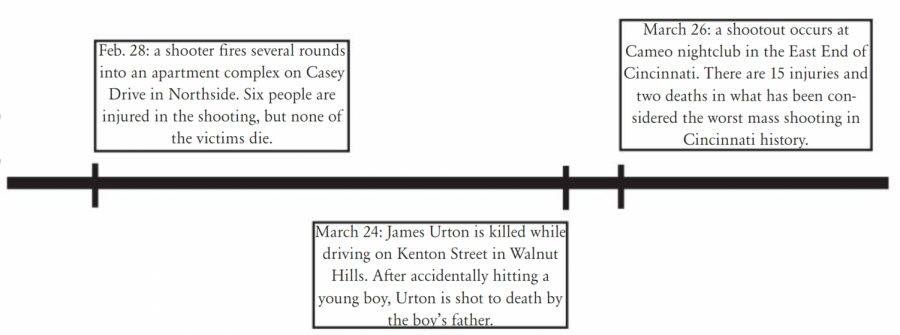Your donation will support the student journalists of Walnut Hills High School. Your contribution will allow us to purchase equipment, cover our annual website hosting, printing costs and offset competition and conferences fees for students.
CSI Cincinnati
April 14, 2017
The worst mass shooting in city history recently struck Cincinnati, according to the Cincinnati Enquirer. During the early hours of March 26, a shootout occurred at Cameo nightclub in the East End of Cincinnati, resulting in two deaths and 15 injuries. The shooting brought attention to the rise in violent crime that Cincinnati has experienced so far in 2017.
In the wake of the Cameo nightclub mass shooting, one suspect, Cornell Beckley, has been charged. Another man, Deondre Davis, was believed to be involved, but died of injuries he sustained during the shooting.
Since the shooting, the city has united around the victims of the mass shooting. Over 500 people attended the funeral of O’Bryan “Lucky” Spikes, the only other victim to die from his wounds.
However, the Cameo shooting has not been unique in relation to other recent violent events. Though Cameo was the worst mass shooting Cincinnati has seen, there has been a rise in gun violence and crime in the city for several years.
The past three months have seen a total 112 deaths in Cincinnati related to gun violence alone. Data shows that deaths from gun violence are “40 percent higher than in the same period last year, and 35 percent higher than the 10-year average,” according to the Cincinnati Enquirer.
Several other violent events have occurred recently that exhibit the rise in gun-related deaths and injuries.
On Feb. 28, five people were injured in a Northside drive-by shooting. The victims, ages 16 to 22, were at an apartment complex on Casey Drive when it happened.
A shooting in the Walnut Hills neighborhood occurred on March 24, just days before the Cameo shooting.
The incident began when James Urton, a man from Mason, struck a child by mistake while driving on Kenton Street. The father of the child, Jamall Killings, proceeded to shoot Urton to death after Urton went to check on the child. Another man, Deonte Baber, is being charged in connection with the shooting on charges of murder and felonious assault after he assisted Killings.
While these larger incidents have dominated Cincinnati headlines in recent weeks, there have been many other violent and deadly crimes in 2017 that have contributed to the higher statistics for the past three months.
“It’s really unfortunate that it happened, but I knew we would have something happen at some point just because of how common gun violence is becoming, which is really sad,” SENIOR Jasmine Riechmann said when discussing the Cameo shooting.
These recent events highlight community safety questions that are arising as a result of gun violence.
“Gunshots have claimed victims in 32 of the city’s 52 neighborhoods so far this year, from Mount Auburn to Roselawn to Westwood,” according to the Cincinnati Enquirer.
However, it is important to note that violence and crime rates in cities usually rise and fall at random times. Furthermore, crime statistics may vary depending on the factors one is using when determining them.
For example, crime statistics compiled from the dates of March 5 to April 1 by the Citywide STARS Report show that total violent crime has remained constant. The data is based on average crime rates for a 28 day period from the last three years. The report categorizes homicide, rape, robbery and aggravated assault as forms of violent crime. Statistics for violent crime are subject to variation meaning they may be high one year and extremely low another year. “Crime rates rise and fall for many reasons and, sometimes, for no apparent reason at all. Drugs, domestic disputes, easy access to guns, and even the weather all can play a part,” The Cincinnati Enquirer said.
Though statistics may change significantly with different variables at work, in the end an individual’s life is at stake.
Each person in each statistic had a unique story behind them, and that is why community members have stepped up to try to address these issues. While they go about it in various ways, they all have the hope of decreasing the amount of crime and violence in Cincinnati.
WHHS students see many potential ways to curb the increase in violent crime.
“I think we need more education and should work to make gun violence even less acceptable. We should also work on improving [the discussion] about mental health and things of that sort,” Riechmann said.
Many community members and students have tried to find solutions to improve the problem of gun violence in similar ways. Whether it be by consoling family members or by making attempts to find the root cause, people throughout the city are coming together are to help end the upsurge in violence.

